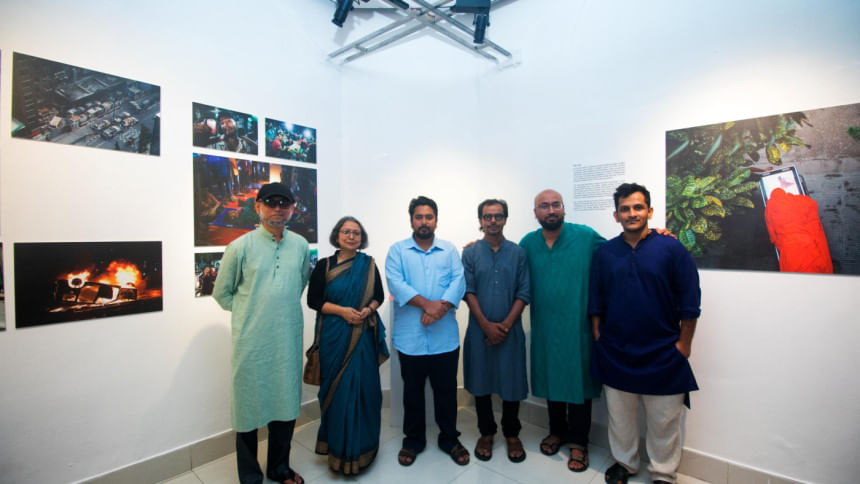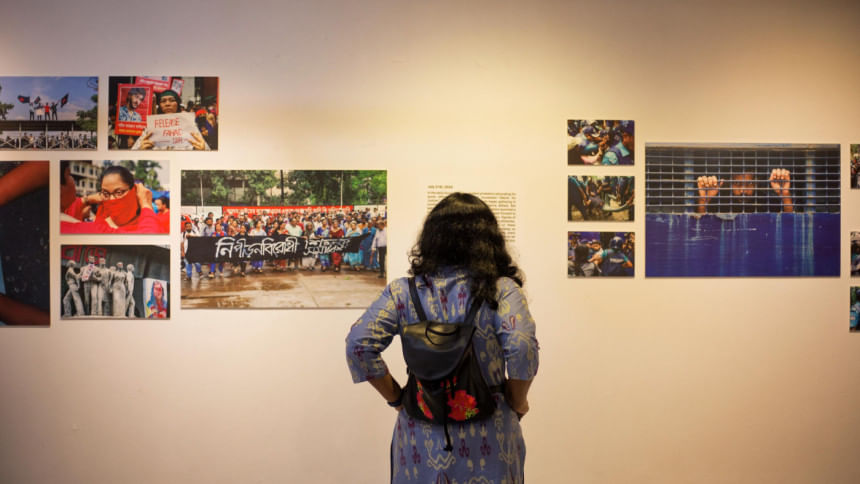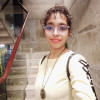‘Witness to the Uprising’: Jibon Ahmed’s lens on July 2024

An entire year has passed since the blood-red chapter of July 2024; a trauma we never anticipated facing in an independent country. The survivors of the Liberation War of 1971 are still wounded by the atrocities of Pakistani rule, and yet they witness their countrymen, their children, having their blood spilled. Just as our generation saw the monstrosities of 1971 through visual documentation, the generations after us must also know what we fought for in 2024. With that in mind, several photographers came to the front lines. One such person is Jibon Ahmed, whose solo exhibition "Witness to the Uprising" captures the spirit and sacrifice of those days.

Jibon Ahmed has worked as a journalist for a decade with different news agencies, including Manab Zamin and Netra News. When the time called, he rose alongside the students during the quota reform protests. He captured whatever he could, whenever he could, and wherever he could, to show the world the extent of police brutality under the fascist regime.

Alliance Française de Dhaka (AFD) is currently exhibiting the visual memoir of Jibon Ahmed from the mass uprising of 2024. Filmmaker Mostofa Sarwar Farooki, the current adviser for cultural affairs, was present at the opening ceremony as the chief guest. Also in attendance were veteran photojournalist Shahidul Alam, social activist Prof Samina Luthfa, and journalist Tasneem Khalil. A book containing the photographs was also launched.

The quota reform movement was initiated by students, but it brought together people from all walks of life, especially after the mistreatment of protesters by powerful government officials and the ruthless attacks by the police. The situation kept escalating, and the number of injuries and deaths continued to rise. Jibon Ahmed did not miss a chance to photograph those who were risking their lives. He himself was shot, yet he never let go of his weapon — his lenses.

Entering La Galerie of AFD, I was met with the soul-crushing images of the mass uprising. Seeing them on social media was entirely different from viewing them up close. Ahmed's camera captured the pain, the fearlessness, the shock, the concern, and the uncertainty in people's eyes. Among all the photographs, the image of Ghulam Nafiz, the man who was shot and carried in a rickshaw, struck me the most. He was denied hospital entry by political goons. However, the story of tiny six-year-old Riya Gope, who was shot in the head from a helicopter as she stood on her rooftop, shattered my heart. The little angel did not survive.

A year on, Ahmed is questioning whether we achieved what we wished for, as minorities, women, children, and the underprivileged are still being discriminated against. Crimes against women are committed openly and with impunity. Ahmed has highlighted the undeniable roles of women in the uprising, one of the things I love most about his photography.

In short, this exhibition is one of the best overall reflections of the mass uprising in July that resulted in the end of the fascist regime which exploited the legacy of 1971. Let us hope the current young leaders do not exploit 2024 and become the very villains they worked so hard to depose.
AFD will run the exhibition until August 11, 2025.

 For all latest news, follow The Daily Star's Google News channel.
For all latest news, follow The Daily Star's Google News channel. 



Comments